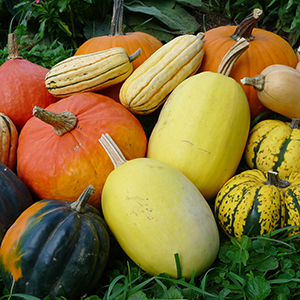
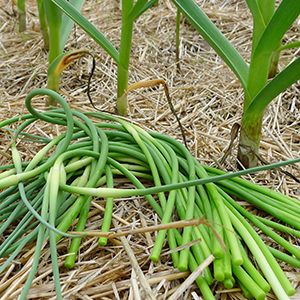
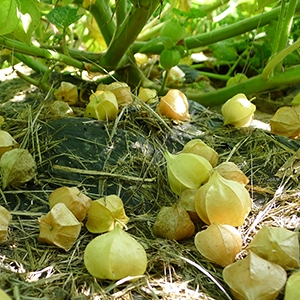

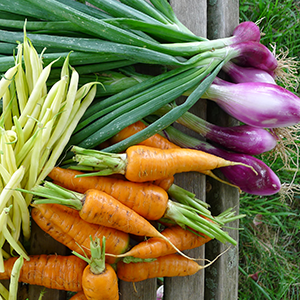
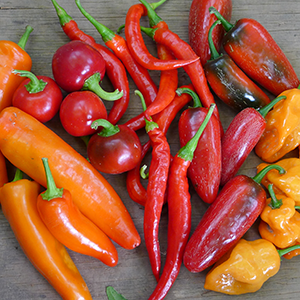
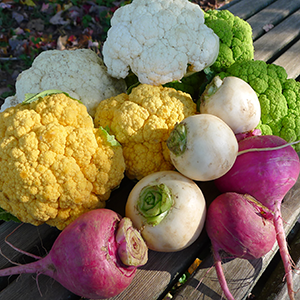



News and Notes | The Anchor Run Blog
Posts Filtered by Month - December 2015 |
Show Recent Posts
December 20, 2015
At The Winter Solstice
By Derek McGeehan
At The Winter Solstice
By Derek McGeehan
As we approach the winter solstice it almost feels like winter is actually arriving this weekend, but next week temperatures are supposed to climb right back up into the 60s. I'm basically used to the balmy weather now and easily forget what time of year it is. For example, last night a low of 28 degrees was forecast and I was thinking about shutting the drop down sides of the high tunnel. I quickly forgot to do so, hopefully because I haven't had to shut it in about a month. I woke up suddenly this morning around 5am realizing I forgot, raced out to the tunnel with a headlamp expecting to see cold and frozen greens, but was welcomed by perky and happy kale and arugula. I shut it anyway just to be safe, but then noticed one of our young barn chickens was missing so the warm and fuzzy feeling evaporated with another concern. Now that it is actually light out hopefully she'll come out of hiding.
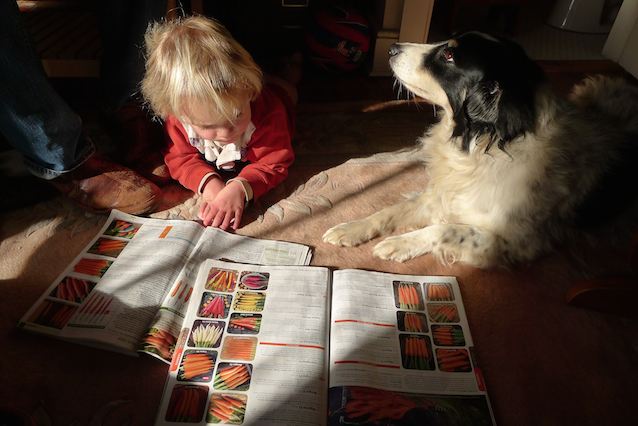 Gabe and Borci ponder the many carrot varieties to choose from. Required qualities for us to grow: tolerate heavy soil; strong tops to ease harvest; sweet, great flavor; organic, non-GMO; and around 6" long.
Gabe and Borci ponder the many carrot varieties to choose from. Required qualities for us to grow: tolerate heavy soil; strong tops to ease harvest; sweet, great flavor; organic, non-GMO; and around 6" long.Coinciding with the solstice this week is our 32nd and final harvest pick up of 2015. Thirty-two weeks sounds like a long time and takes us all the way back to May. It has been a fun, challenging, rewarding, edible ride and now we can look forward to 2016. Our work is starting to reflect the change of seasons and years; we're beginning our seed order and starting to think about our crop plans for next year as well as interviewing and hiring our farm crew. Working on the seed order is a mostly pleasant job. It involves dreaming about a perfect season with perfect growing conditions and nice, bountiful harvests. We have to temper unrealistic expectations (like carrots in the share every week) but really realistically brainstorm ways to improve (like having carrots in the share for perhaps 8, 10, or 12 weeks). We need to decide what no one but us and maybe a few other members enjoy eating (like dandelion greens) and ask ourselves "is it worth growing?". How do we improve the share and fully satisfy our CSA members? Does everyone like this or should it be a choice? Should we try spinach again? What do members really want each week? How can we please everyone? Are the shares too big? It is the time of year to dream, because, in theory, this is when we make most of our decisions for the following season. Ah, those airbrushed and enhanced veggies in the catalogues look so appealing, but do they taste good? Thanks everyone for another great year!

December 20, 2015
32nd Week of Harvesting
By Derek McGeehan
32nd Week of Harvesting
By Derek McGeehan
Winter Share #6 (Week B) should include potatoes, butternut, kohlrabi, garlic, turnips, kale, arugula, spinach, collards, napa cabbage, radishes, and celeriac. Some items will be a choice.

December 20, 2015
Another Season Extension
By Derek McGeehan
Another Season Extension
By Derek McGeehan
Due to the mild fall and winter we still have an abundance of crops to harvest fresh on the farm including several varieties of kale, arugula, greens mix, collards, napa and regular cabbage, tatsoi, bok choy, rutabaga, radishes, and turnips as well as storage crops like potatoes, garlic, celeriac, beets, turnips, radishes, rutabaga, and kohlrabi. We're also excited about cut-and-come-again greens like spinach, mix, raab, arugula, and kale. Nothing improves the sweet flavor of vegetables like the cold of fall and winter!
We are planning to offer CSA shares on a weekly basis throughout the rest of the winter until we run out of produce or temperatures drop low enough to actually end the growing season. Shares will cost $30 per week and need to be paid for when you pick up your produce (cash or check payable to Anchor Run CSA only). On the weekend prior to each pick up we will e-mail you what is in the expected harvest and you will have to respond by 12am midnight Monday if you want a share that week.
This will give us great experience with growing and distributing produce throughout the winter months (and into spring?) and move us closer to fulfilling our dream of a year round CSA. The pick up day will be Wednesdays 1-8pm and the first share will be January 6th. Shares will include fresh greens and roots and storage roots and tubers and should include around 10 items or 10 pounds of produce. Your comments or suggestions are welcome.

December 13, 2015
Kohlrabi and Turnips Reappear
By Derek McGeehan
Kohlrabi and Turnips Reappear
By Derek McGeehan
Winter Harvest #5 (Week A) should include potatoes, butternut winter squash, kohlrabi, garlic, salad turnips, arugula, lettuce, kale, parsley, collards, cabbage, radishes, and fennel. Some items will be a choice.

December 13, 2015
Fall ideas for Hakurei Turnips and Kohlrabi
By Linda Dansbury
Fall ideas for Hakurei Turnips and Kohlrabi
By Linda Dansbury
It seems that most of the time I focus newsletters on methods that will not heat up the kitchen - with this weather I guess I should be doing the same thing!
However, my cooking methods shift in the fall/winter so when Derek sent me this week's harvest I thought about the kohlrabi and hakurei turnips and how I will use them. Both can be eaten raw as a snack or sliced thin and added to salads - which is something I know I have discussed in the past. Here are a couple of things you might not know:
Kohlrabi - they are delicious roasted! I have most often combined them with other fall veggies when roasting, but they are great roasted by themselves. Cut into slices about 1/4" thick and then cut into half moons. Toss in olive oil, sliced garlic, salt and pepper and spread in a single layer on a cookie sheet. Roast in a 450 degree oven for 15-20 min turning occasionally to brown evenly. Remove from oven and sprinkle with grated parmesan cheese. Place back in oven for about 5 minutes or until cheese is melted and slightly browned. Very yummy!!
Hakurei Turnips - if your family likes glazed carrots, this method is likely to be a success! If turnips have tops, remove and reserve. Place turnips into a saute pan and place water halfway up the sides of the turnips. Add about 1 Tablespoon each of butter and sugar and a good pinch of salt. Bring to a boil and simmer, stirring occasionally until tender and liquid is getting syrupy. If turnips are tender before liquid is syrupy, remove turnips to a serving plate and cook liquid down a bit. When to a nice consistency, add the turnip greens (or other if no turnip tops - such as escarole or endive) and cook until just wilted. Add the greens to the plate and serve.

December 13, 2015
Springtime in December
By Derek McGeehan
Springtime in December
By Derek McGeehan
A record breaking high temperature today of 70 degrees, windows on the house open, only 9 hours or so of daylight, the sun extremely low on the horizon, and no chirping insects or birds. Quite an interesting combination for the middle of December, though I'll repeat that continuing to harvest fresh outside greens is a very nice treat. This will be the final week for lettuces, however, because the mature heads did sustain some frost damage whenever it was actually cold enough to do that and their quality is going downhill. Fear not, though, because kale, arugula, collards, cabbage, spinach, and a few other fresh greens are still looking grade A and harvestable. I do wonder if we will ever have an actual winter this year and we must, right? Can we rely on that consistency, or will this season fully blend into next season without an end to the growing season? I see in the news media that leaders from around the world got together to figure out the climate change issue and perhaps devise some way to curb global temperature rise at 3.6 degrees fahrenheit. Right now that feels relevant but last year at this time when the northeast US was the only place in the world with below average temperatures I was definitely wondering.
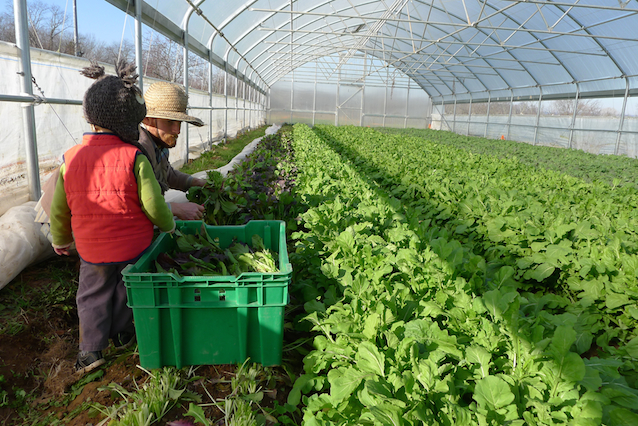
The greens in the high tunnel are holding their beauty. Meanwhile I show Gabriel how to harvest mixed greens.
Here on the farm we're mainly focused on growing crops organically (only certified by you) and trying to improve and sustain soil health and quality while also attempting to limit our fossil fuel reliance. We don't use draft horses yet but Dana does keep bringing that up. In a perfect world it would be nice to farm completely in balance with Mother Nature but someone will have to define for me what that means exactly. Let's all do our best to keep the planet healthy for our kids and theirs.

December 6, 2015
Cold Tolerant Veggies
By Derek McGeehan
Cold Tolerant Veggies
By Derek McGeehan
Winter Harvest #4 (Week B) should include potatoes, butternut, garlic, beets, lettuce, arugula, kale, cabbage, parsley, greens mix, collards, fennel, escarole, and radishes. Some items will be a choice. U-pick should include herbs.

December 6, 2015
Thanking El Nino
By Derek McGeehan
Thanking El Nino
By Derek McGeehan
A mild winter may hurt us next season in the form of bugs and crop diseases and perhaps less hibernation, but it sure feels nice to continue harvesting fresh crops this late in the year. Every time I look at the 10-day forecast and there are no temperatures predicted to drop much below 30 degrees - as well as highs in the 50s - I feel a little giddy, especially now since that puts us safely into the middle of December and closer to the Solstice. I really wouldn't mind extending the harvest beyond the end of this month and if the weather allows us to do so we just might take that leap. If we have crops in storage and crops outside that have continued to survive and thrive, why shouldn't we continue the CSA? Of course, we will need to identify a pick up schedule and all of that, but we're hoping that at least some of you, our members, would want to continue to eat nutritious produce from just down the road after the New Year.
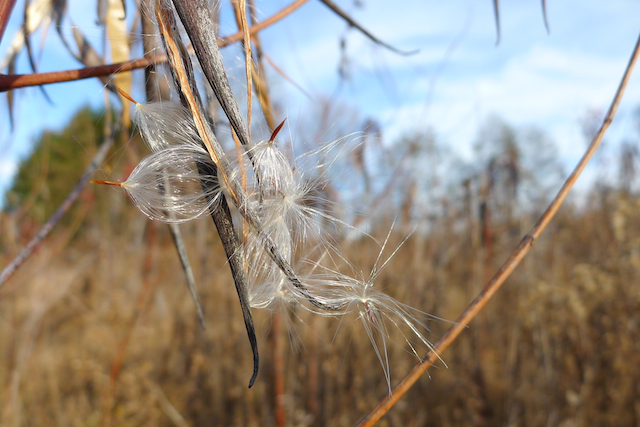
These seeds are ready to take flight from an unknown plant that is found in large numbers in one of our meadows.
At some point it will get colder and it will become harder to keep the fresh crops alive, but we have the ability to cover them with hoops and fabric. The greens in the high tunnel will survive outside lows in the teens and most of the cold-hardy unprotected crops are good into the mid-twenties. Roots like rutabaga and radishes will probably survive even lower. Somewhere in our minds we've always wanted a year-round CSA and four years ago began offering the 6-week Late Fall CSA, which was an initial venture. The next step would be experimentation with growing and distributing later in the winter and into spring. I love the idea of a continued harvest and if this allowed the farm to scale back somewhat during the extremely busy time of year by balancing out income throughout the calendar, I think that would contribute to the long-term viability of the CSA. We'll keep you updated.

POSTS BY TYPE
POSTS BY MONTH

